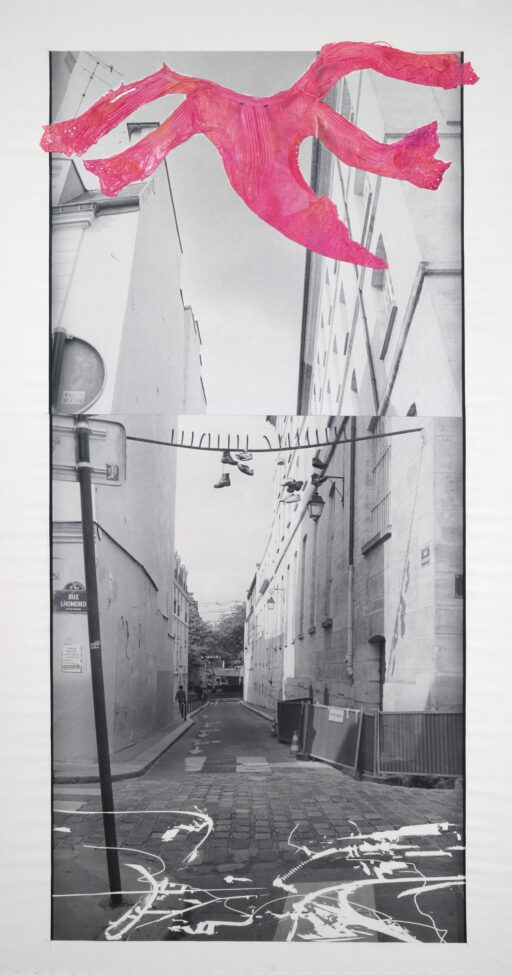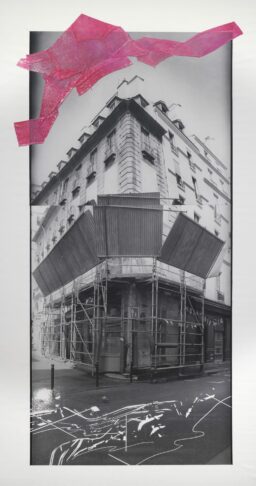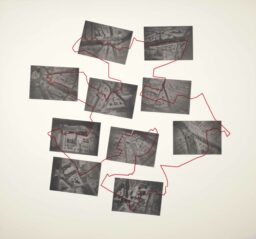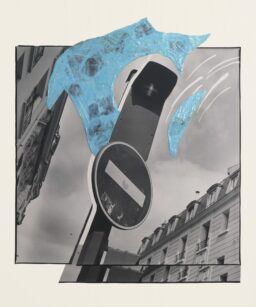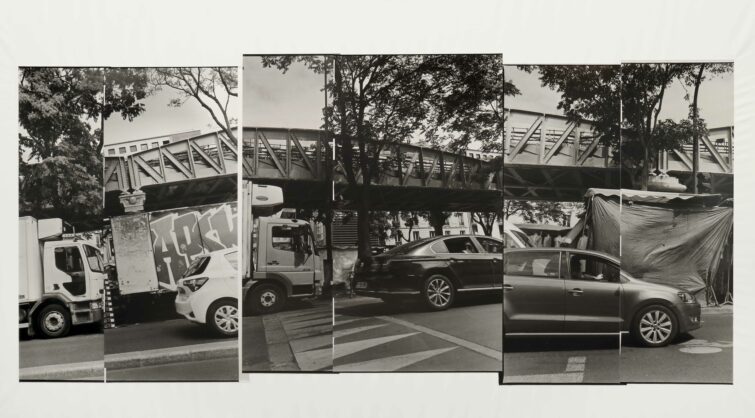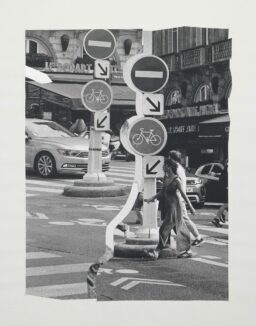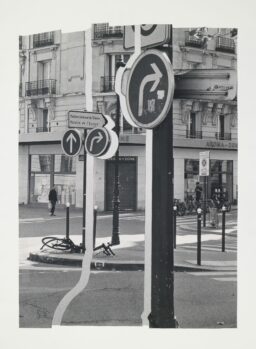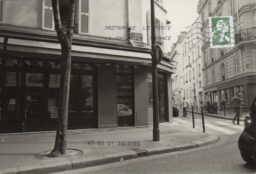Parcours-Entre la poste pnenmatique et le pigeon voyageur
The gallery WAITINGROOM occupies a site that used to be a post office (the former Bunkyo Suido Post Office) from which these newworks emerged. Above the entrance is a sign that reads “Post Office.” With a past like this the venue was an entrance leading towardsan imaginary fiction. The reality of this fact inspired me to jump into action and I came up with the idea for a series of photographicworks in which I would travel through time and space in Paris the city where I live with “postal” as the keyword.
Some of you may be familiar with the postal service based on pneumatic tubes that operated in Paris from 1868 to 1984. La postepneumatique a high-tech communication system of its time was a physical mail network that ran through the ground beneath Parisconceived to take some pressure off the electric telegraph system that had become overloaded. A letter written on paper is brought to thepost office and handed to a postal worker who would place it in a cylindrical capsule and throw it into a tube that would open up next tohim. When the capsule descends underground the pressure and vacuum forces it to run toward its destination at a breakneck speed ofone kilometer per minute. Under our own feet just beneath us was this network of steel tubes. In other words handwritten messageswere physically flying around beneath the ground at all times in this machine-like city.Come to think of it the purpose of life without even waiting for DNA is to transmit information and communicate along with all of humanactivity since time immemorial.
The process of creating these works began with mapping.I obtained a map of the network of former pneumatic postal stations and compared it to a present-day map of Paris. After tediouslycopying the lines connecting each base station I created this chimera-like map of closed lines. These lines were part of a 37-kilometerlong parcours (circuit) that would form the basis for these new works. The fantasy did not end with this underground pneumatic postalsystem however. It also extended to communication itself. Shifting my gaze from the underground to the sky the figure of the carrierpigeon appeared. My question was do these pigeons fly with a life-sized map?
This time, I created a parcours of my own design and took photographs as I moved along it. I did not take tourist photos of Paris that deviate from this circuit. Neither did I want to make a realistic documentary of this act, however. Instead of taking pictures of one street or another, I used the scenery that revealed itself when I stood somewhere along the parcours as a kind of springboard. Sometimes, as in a novel, I found myself desiring transcendence so badly that the viewpoint of the subject suddenly became that of a bird, or an intricately entangled underground tube.
This is why none of these works are straight photographs. For example, in the darkroom, I would cut up the silver halide prints that I had made myself, and create a montage of multiple photographs by collaging them on a canvas. In the darkroom, I also used the photogram technique to burn an image of another dimension onto a print of a landscape. I attempted to make a papier collé (type of collage) using Baryta prints, and obtained two years’ worth of the French scientific magazine La Nature from 1936 to 1938. These magazines, which filled one entire cardboard box, were crammed full of the high- tech information of the time. I cut out and collaged research papers, articles, advertisements, and other pages that I thought were interesting. It was a high-tech trip that took one back 88 years from the present. I added some surface texture in oil paint, as if to confirm the existence of these articles. Relief-like textures appeared on these photos. These “secondhand clothes” themselves, which were said to plasticize memory, were glued on top of the silver halide prints.
The first thing you see in the gallery is a parcours circuit painted with red lines and a collage of bird’s-eye view photos that resemble “pigeon photography.” The next work consists of photos of roadblocks, but it is the sky to which access is blocked. Of course, the sky is for the birds, not drones. There are two long and wide (250cm) vertical works, taken with particular attention paid to the top and bottom. These were taken at rue des Panoramas and rue Lhomond. The name “Panoramas” may recall Louis Daguerre, who was a panorama painter. Eugene Atget also took exactly the same photographs at this location in 1907 and 1913. In these prints, I applied a photogram to the ground to evoke an underground network, and a collage to the sky to trace the trajectory of a pigeon’s flight.
In Paris, there are two places where the metro comes out of the underground and runs in midair (on elevated lines). I photographed the northern part (Boulevard de la Chapelle), which was built in 1900. By creating a montage of multiple photographs, the viewpoint shifts and the stable perspective collapses, revealing gaps in the image. The network of steel on the ground, with its strong presence that is neither underground nor in the sky, begins to waver.
In addition, about 30 small-sized silver halide prints will be on display. These photos were printed, sent out through the mail, and then returned to the artist. They are stamped and postmarked.
A red line has been drawn on the wall of the exhibition space to invite visitors to the space at the back. This line is meant to indicate another, suggested circuit. Following this line leads the visitor to a pigeon in flight on the last wall, and unpublished images from the “Birds” series created in 1994. Was I able to transplant even a small part of the parcours that originated from the underground postal network that used to exist in Paris, to this space formerly occupied by the Bunkyo Suido Post Office? It would be my pleasure to take you on a short trip to experience this tiny portion of space-time in Paris.
Yuki Onodera, 12 septembre, 2024
